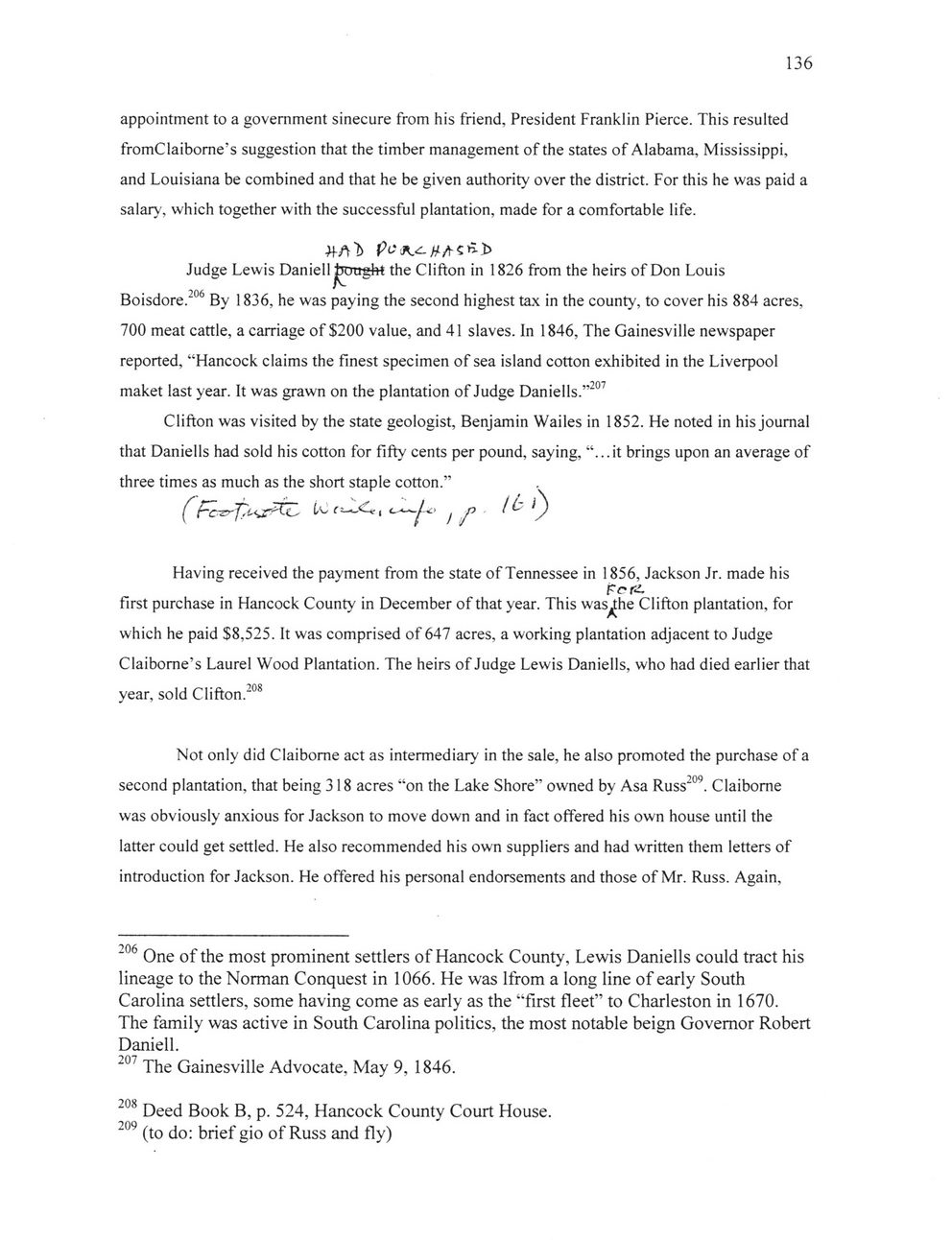This text was obtained via automated optical character recognition.
It has not been edited and may therefore contain several errors.
136 appointment to a government sinecure from his friend, President Franklin Pierce. This resulted fromClaibome?s suggestion that the timber management of the states of Alabama, Mississippi, and Louisiana be combined and that he be given authority over the district. For this he was paid a salary, which together with the successful plantation, made for a comfortable life. Judge Lewis Daniell the Clifton in 1826 from the heirs of Don Louis Boisdore.206 By 1836, he was paying the second highest tax in the county, to cover his 884 acres, 700 meat cattle, a carriage of $200 value, and 41 slaves. In 1846, The Gainesville newspaper reported, ?Hancock claims the finest specimen of sea island cotton exhibited in the Liverpool maket last year. It was grawn on the plantation of Judge Daniel Is.?207 Clifton was visited by the state geologist, Benjamin Wailes in 1852. He noted in his journal that Daniells had sold his cotton for fifty cents per pound, saying, ?...it brings upon an average of three times as much as the short staple cotton.? ffevrfiuj&C ^ , />? lL' ') Having received the payment from the state of Tennessee in 1856, Jackson Jr. made his prri first purchase in Hancock County in December of that year. This was^the Clifton plantation, for which he paid $8,525. It was comprised of 647 acres, a working plantation adjacent to Judge Claiborne?s Laurel Wood Plantation. The heirs of Judge Lewis Daniells, who had died earlier that year, sold Clifton.208 Not only did Claiborne act as intermediary in the sale, he also promoted the purchase of a second plantation, that being 318 acres ?on the Lake Shore? owned by Asa Russ209. Claiborne was obviously anxious for Jackson to move down and in fact offered his own house until the latter could get settled. He also recommended his own suppliers and had written them letters of introduction for Jackson. He offered his personal endorsements and those of Mr. Russ. Again, 206 One of the most prominent settlers of Hancock County, Lewis Daniells could tract his lineage to the Norman Conquest in 1066. He was lfrom a long line of early South Carolina settlers, some having come as early as the ?first fleet? to Charleston in 1670. The family was active in South Carolina politics, the most notable beign Governor Robert Daniell. 207 The Gainesville Advocate, May 9, 1846. 208 Deed Book B, p. 524, Hancock County Court House. 209 (to do: brief gio of Russ and fly)

Jackson, Andrew 010